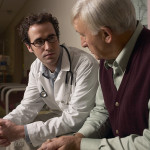Events of the past decade have changed how Americans view safety and security. While physician offices and ambulatory medical facilities won’t require the same large-scale emergency response to disasters as hospitals, there are many events that can affect all health care facilities. In addition to patient care priorities, failure to protect patients or health information, even in emergency conditions, could lead to liability for causing patient injury or breaches of confidentiality.
Whether from violence in the workplace, fire, explosions, severe weather conditions with flooding and power outages or extreme emergencies such as bioterrorism, if disaster strikes, a well-designed action plan will safeguard patients and staff, protect health information, minimize disruption and provide for orderly recovery.
The Centers for Medicare and Medicaid Services (CMS) finalized a 2016 rule establishing emergency preparedness requirements for health care physicians and advanced health care professionals participating in Medicare and Medicaid. These requirement are designed to increase patient safety during emergencies and create a coordinated response to natural and man-made disasters.
1. CREATING YOUR EMERGENCY PLAN
First, analyze where you are most vulnerable.
- Perform an analysis of potential disasters affecting your facility by reviewing patient, staff and physical plant safety as well as the protection of medical and business records. Are there potential hazards located nearby? Is there a river that may overflow or a volatile chemical plant?
- Evaluate risks you have analyzed based on the probability of occurrence and how prepared you are to deal with them.
- Consider all possibilities such as utility failures, a natural gas explosion, a burst water main or a lightning strikes causing a fire in your office when every treatment room is filled.
- Prioritize events that may be unique to your setting such as women’s health centers being targets for bomb threats and violence.
- Develop a specific plan for the prevention of workplace violence as well as domestic violence that could be brought to the work setting.
- Consider collaborating with resources such neighboring health care facilities, local law enforcement and the fire department.
Second, keep your plan simple.
- Identify staff member to develop a written Disaster Response Plan.
- Use the written plan to communicate and train all levels of staff and anyone outside your organization who may be affected.
- Create a checklist of things to do in case of an emergency.
- Determine who will decide to evacuate and to where.
- Build an emergency kit with flashlights, gloves, paper, pens, medications, bandages, etc. Use this list of items from the American Academy of Pediatrics.
- Keep in mind that you, your patients and your staff should also develop a personal home preparedness plan and you need to determine how those plans might impact your practice’s Disaster Response Plan.
2. DEVELOPING POLICIES AND PROCEDURES
- Staffing
Plan for the fact that an external disaster could interfere with staffing needs. Key staff members and physicians might be unable to reach the office. - Phone Lines
Ensure your phone lines keep running or are backed up and brought back quickly. Even if your office is not ready to reopen, place a message on your phone line to keep your patients and staff updated. - Business Paperwork
Maintain important documents such as loans, real estate records and contracts in a safe or safe deposit box for ease of access. Document their location. - Restoration and Repairs
Plans should also consider that your office may need repair and you may not be able to return for an extended period of time. Contingency planning is critical. - Disaster Record
Create and retain a record of the disaster event and a list of any patient records affected, with recovery efforts, successes and failures outlined. This will allow for easy retrieval of general information should any legal or accreditation issues arise subsequent to the emergency. - Insurance Discussions
Review the available coverage for physical repairs, record restoration, setting up a temporary practice location and other practicalities to allow you to return to the practice of medicine. - Patient Care
Create a checklist that reflects continued patient care needs and prioritizes patients by those who will need the most assistance in the event of a community disaster such as those who are bed-bound, on oxygen or possibly confused. - Evacuation and ShutDown
- Explore how long your practice could be shut down before impacting your finances.
- Be prepared for an orderly evacuation including communicating with your business neighbors.
- Determine in surgical or diagnostic facilities whether it is safe for a procedure to continue or whether there can be immediate transportation to another facility.
- Remember in multistory buildings you will need to use the stairs, not the elevator.
- Staff and patients should meet outside at a predetermined location.
- Designate staff to ensure all patients, visitors and staff are out of the building.
- Turn off equipment, secure drug cabinets and medical supplies, if time permits.
- Secure cash/receipts and remove them, if possible.
- Place calls on forwarding to a secure source.
- Redirect arriving patients and post signs at the building and on your website warning that the building is closed.
3. ESTABLISHING A COMMUNICATIONS PLAN
Each emergency situation requires communicating with key individuals including emergency government resources, physicians/advanced health care professionals, patients, vendors and staff.
- Remember power may be down so it is vital to have printed plans and an Emergency Contact List that includes phone numbers and emails for government emergency agencies, local hospitals, partners, colleagues, vendors and others.
- Develop a staff communication tree designating the staff members who will make contact with those on the contact list.
Upload your computerized record system routinely to the Cloud or other off-site storage. Also, you can download the information onto thumb drives, while hard copies of charts must be carried out.
4. PREPARING, TRAINING AND TESTING
- Train staff member as to their roles in an emergency.
- Conduct drills at least semiannually; always look for ways to improve your response to emergency situations.
References
Rothkopf, L., & Brennan-Wirshup, M. (2013, Mar-Apr 20(2):13-18) A Practical Guide to Emergency Preparedness for Office-Based Family Physicians. Retrieved from Family Practice Management http://www.aafp.org/fpm/2013/0300/p13.html
Preparedness Checklist for Pediatric Practices. American Academy of Pediatrics, 2013. Retrieved from https://www.aap.org/en-us/advocacy-and-policy/aap-health-initiatives/Children-and-Disasters/Documents/PedPreparednessChecklist1b.pdf
Schwartz, S. (2010) Disaster Planning for Your Practice. Retrieved from Physician Practice http://www.physicianspractice.com/managers-administrators/disaster-planning-your-practice
Ready.gov https://www.ready.gov/ Available response guides on various event.
FEMA: How to Assemble a Disaster Preparedness Kit. Retrieved from https://www.fema.gov/media-library/assets/videos/73758
Joan M. Porcaro, RN, BSN, MM, CPHRM, is a senior risk management consultant at the Mutual Insurance Company of Arizona.








